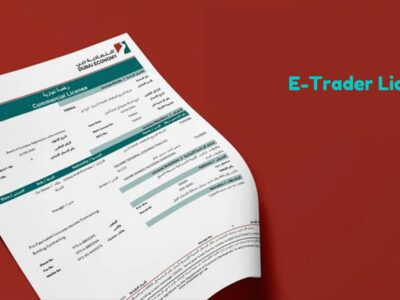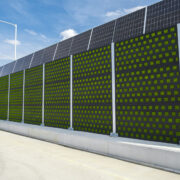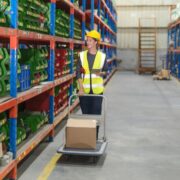In urban areas where construction never seems to stop, the sound of drills, hammers, and machinery has almost become part of the landscape. But while we’ve come to accept some level of noise as a by-product of progress, too much of it can lead to real problems—stress, lack of sleep, and even health issues. That’s where noise barrier sheets come in.
These sheets have become a go-to solution for managing noise in construction zones, roadworks, and industrial sites. But while they may block out the noise effectively, there’s growing concern about their environmental impact. Are noise barrier sheets a sustainable choice, or are we simply replacing one type of pollution with another, namely, waste?
What Exactly Are Noise Barrier Sheets?
Noise barrier sheets are panels made from dense, sound-absorbing materials. They’re often hung along fencing, scaffolding, or temporary walls on construction sites, where they act as a buffer between the noise source and the surrounding community.
Common materials used include:
- PVC (Polyvinyl Chloride) – durable but not biodegradable
- Vinyl-coated polyester – strong and weather-resistant
- Glass wool or mineral wool – used in layered sheets for sound absorption
- Eco-fabric alternatives – made from recycled or plant-based fibres
Some sheets are designed purely to reflect sound, while others are engineered to absorb it, depending on the location and the intensity of the noise.
Why Are They So Popular?
Noise barrier sheets are often preferred over rigid structures or permanent walls for a few reasons:
- Portability: They’re easy to install, remove, and reuse between job sites.
- Flexibility: They can be fitted onto various surfaces and structures.
- Cost-effectiveness: Compared to building permanent noise barriers, sheets are cheaper and quicker to deploy.
- Compliance: In many cities, contractors are required to use noise-reducing measures, and these sheets are an easy way to meet regulations.
In short, they offer a practical solution to an everyday urban problem.
The Case for Sustainability
There are several ways in which noise barrier sheets can be considered sustainable:
1. Reusability
There are many high-quality barrier sheets made to withstand years of use. If stored and maintained properly, they can be reused across multiple projects. This reduces the need to produce and dispose of new materials every time a project begins.
2. Energy Savings and Public Health
By cutting down on noise, especially near residential areas or schools, these sheets indirectly support health and well-being. Less stress and better sleep lead to improved productivity and fewer health complaints, something that can’t be overlooked when discussing sustainable urban living.
3. Improved Manufacturing Practices
Some manufacturers are now producing sheets from recycled materials or offering products with biodegradable elements. These eco-conscious options help cut down the environmental footprint associated with raw material extraction and plastic production.
4. Reducing Noise Pollution
While it might not seem obvious, noise pollution is an environmental issue in its own right. Excessive sound disrupts not just human life but also animal habitats. Birds, for instance, may avoid nesting in noisy areas, while certain species can suffer hearing loss or communication difficulties. By minimising this disruption, noise barrier sheets contribute to broader environmental health.
The Downside: Waste and Environmental Cost
Despite their benefits, noise barrier sheets are not without problems, particularly when it comes to sustainability.
1. Materials That Don’t Break Down
Many commonly used barrier sheets are made from PVC or vinyl, which are not biodegradable. If these sheets are damaged beyond repair or simply discarded without proper recycling, they can sit in landfills for decades.
2. Limited Recycling Options
Even though PVC can be recycled, the process is not always straightforward. Not all local councils or waste facilities are equipped to handle it, especially when the sheets are combined with other materials like foam, fibreglass, or fabric. Contamination or multi-layer construction often makes recycling difficult or economically unviable.
3. Short-Term Thinking
On fast-paced construction sites, damaged sheets are sometimes thrown out rather than repaired or cleaned for reuse. This throwaway culture can quickly lead to a build-up of waste, especially when contractors are under pressure to meet tight deadlines.
4. Emissions from Production
Creating plastic-based materials requires a considerable amount of energy and resources. Manufacturing PVC, for example, involves fossil fuels and emits greenhouse gases. If these products are not used for long enough to justify the energy that went into making them, their environmental cost outweighs their benefits.
So, What’s the Verdict?
Noise barrier sheets are not inherently unsustainable, but their impact depends heavily on how they are produced, used, and disposed of.
When used responsibly, they can provide an eco-friendlier alternative to other noise control methods. This is especially true when:
- The sheets are reused across multiple projects
- Recyclable or biodegradable materials are chosen
- Proper storage and maintenance help extend product lifespan
- Contractors avoid one-time use and discard habits
- The sheets are recycled at the end of their use, if possible
On the flip side, if the sheets are used once and then binned, or if they’re made with toxic materials and can’t be recycled, their green credentials fade quickly.
What Should Contractors and Planners Do?
If sustainability is a priority, here are a few tips:
- Buy from eco-conscious suppliers. Ask about recycled content, emissions during production, and end-of-life recycling support.
- Train workers to handle materials carefully. Encourage proper use and storage so sheets aren’t unnecessarily damaged.
- Invest in higher-quality products. A more expensive sheet that lasts five years is often greener than a cheaper one that lasts six months.
- Track usage and recycling rate. This helps with accountability and continuous improvement in sustainability practices.
Final Thoughts
In the push for quieter, more liveable cities, noise barrier sheets have earned their place. They’re effective, versatile, and often the most practical option on the table. But whether they’re a sustainable choice ultimately depends on our approach to using them.
Rather than asking “Are noise barrier sheets good or bad?”, perhaps the better question is: “Are we using them responsibly?”
Because when handled with care and a long-term view, noise barrier sheets don’t just protect our ears, they can help protect the planet, too.














Comments